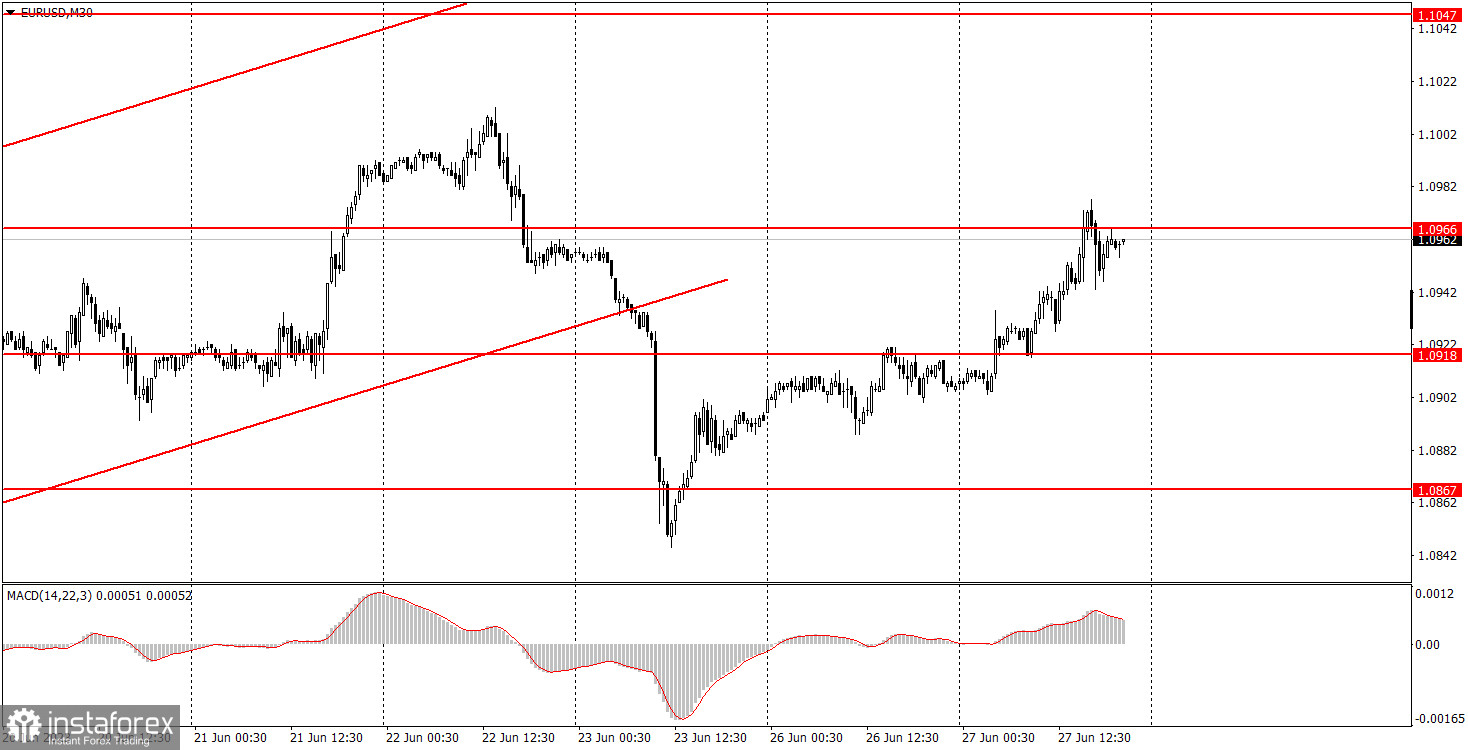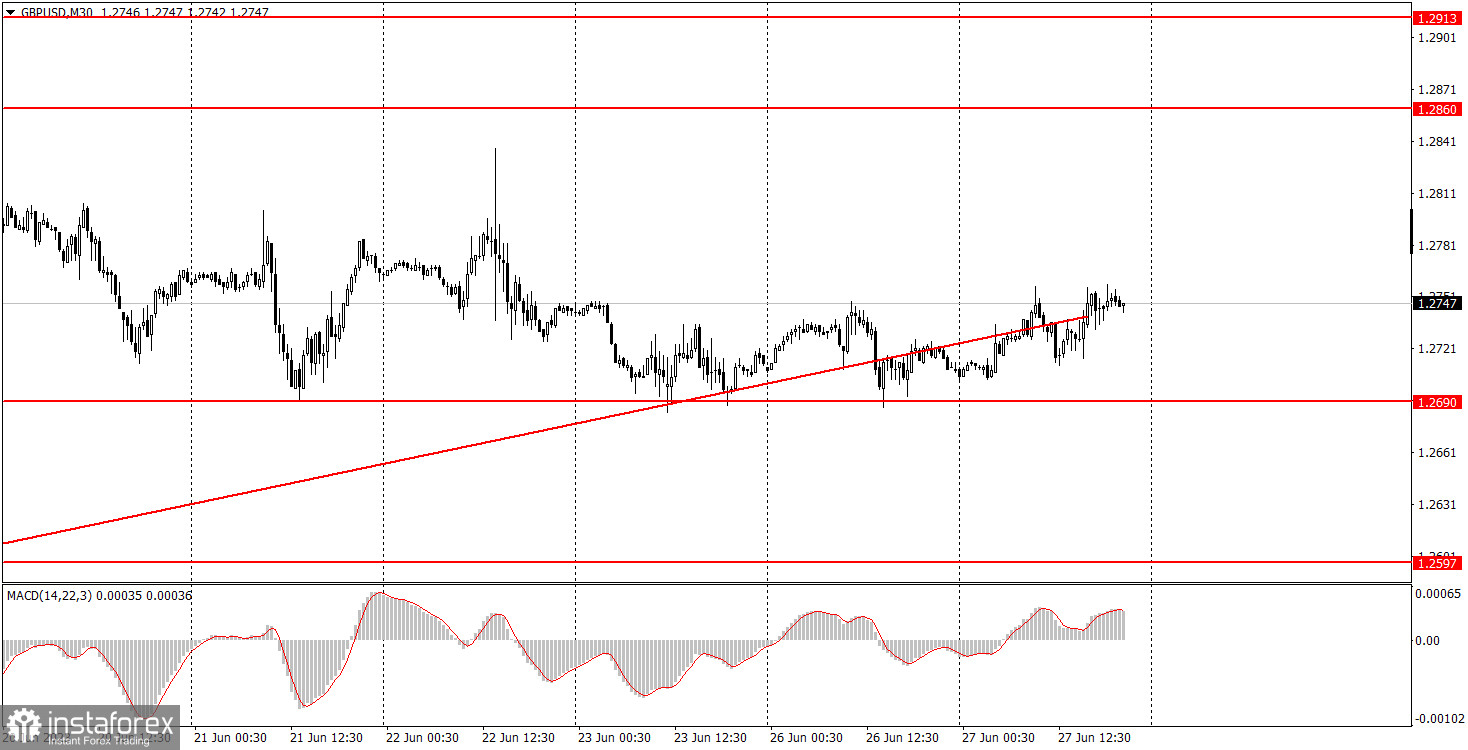Overview of macroeconomic reports

There are no important economic reports scheduled for release on Wednesday. Not even secondary ones. However, there will be several important fundamental events that require full attention. On Tuesday, the euro moved solely due to European Central Bank President Christine Lagarde's speech, so the upcoming speeches should not be ignored, but rather remembered for their timing and potential impact on corresponding currency pairs.
Overview of fundamental events

Among the fundamental events on Wednesday, we highlight the speech by Federal Reserve Chair Jerome Powell. Despite having spoken three times in the last two weeks (and each speech is considered important), he may provide new information. It's unlikely for Powell's stance to change. If he emphasized the need to continue tightening monetary policy in Congress, he would probably say the same at the economic forum of the ECB. The US dollar could theoretically find support from hawkish statements, but the market currently seems more favorably inclined towards buying the euro and pound.
In addition, there will be a new speech by Lagarde, as well as other representatives of the ECB's Monetary Committee, including Luis de Guindos and Philip Lane. They could make important hawkish statements, but their overall stance is unlikely to change every week. Most likely, we will hear more of the same. The market may be cautious with long positions on the euro.
In the UK, Bank of England Chief Economist Huw Pill will deliver a speech, and that could be truly interesting. But only if Pill addresses topics related to monetary policy and interest rates. The BoE surprised everyone last week by raising the key rate by 0.5%, and now everyone is interested in the central bank's actions.
Bottom line
There will be plenty of important events on Wednesday. We can't really be certain whether a speech by a particular official will be significant. Therefore, theoretically, all the speeches on Wednesday may not stir some market reaction. Nonetheless, you should still consider their timing and expect changes in the dynamics of movement for both currency pairs.
Main rules of the trading system:
- The strength of the signal is calculated by the time it took to form the signal (bounce/drop or overcoming the level). The less time it took, the stronger the signal.
- If two or more trades were opened near a certain level due to false signals, all subsequent signals from this level should be ignored.
- In a flat market, any currency pair can generate a lot of false signals or not generate them at all. But in any case, as soon as the first signs of a flat market are detected, it is better to stop trading.
- Trades are opened in the time interval between the beginning of the European session and the middle of the American one when all trades must be closed manually.
- On the 30-minute timeframe, you can trade based on MACD signals only on the condition of good volatility and provided that a trend is confirmed by the trend line or a trend channel.
- If two levels are located too close to each other (from 5 to 15 points), they should be considered as an area of support or resistance.
Comments on charts
Support and resistance levels are levels that serve as targets when opening long or short positions. Take Profit orders can be placed around them.
Red lines are channels or trend lines that display the current trend and show which direction is preferable for trading now.
The MACD (14,22,3) indicator, both histogram and signal line, is an auxiliary indicator that can also be used as a source of signals.
Important speeches and reports (always found in the news calendar) can significantly influence the movement of a currency pair. Therefore, during their release, it is recommended to trade with utmost caution or to exit the market to avoid a sharp price reversal against the previous movement.
Beginners trading in the forex market should remember that not every trade can be profitable. Developing a clear strategy and money management is the key to success in trading over a long period of time.





















